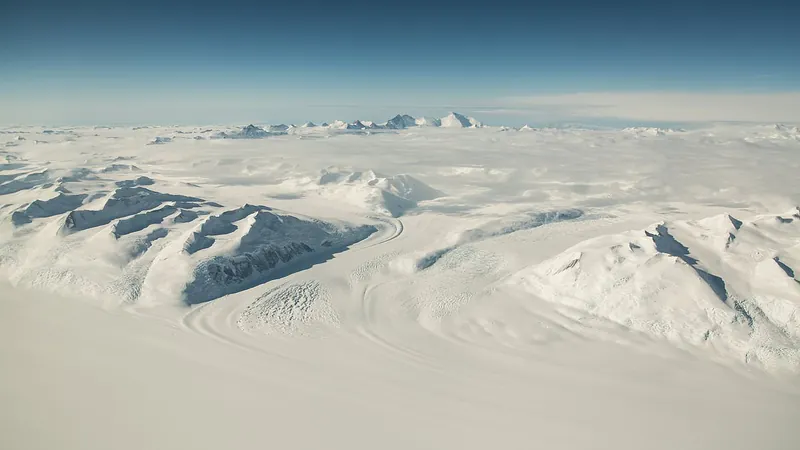
Unlocking Antarctica's Past: Ancient Landscape Discovered Beneath Ice
2025-06-12
Author: Ling
A Hidden Time Capsule Beneath the Ice
An astonishing discovery in East Antarctica has unveiled a vast ancient landscape that has remained untouched for over 34 million years, buried under more than a mile of ice. This hidden terrain lies in a remote area called Wilkes Land, roughly the size of Belgium and situated far from the coastline.
Revealing an Lush, Primeval World
Thanks to advanced satellite data and ice-penetrating radar, scientists have uncovered a world that was once rich with rivers, forests, and even palm trees. Pollen from palm trees found along the nearby coast serves as compelling evidence of a once lush environment teeming with life.
A Landscape Larger Than Maryland
Spanning over 12,000 square miles—comparable to the size of Maryland—this buried landscape is akin to opening a time capsule, according to Professor Stewart Jamieson, the lead author of the groundbreaking study from Durham University.
Antarctica's Dramatic Transformation
Millions of years ago, as tectonic plates shifted, Antarctica slowly drifted toward the South Pole, isolating it from warmer waters and cooler air. This isolation contributed to the formation of massive ice sheets, leading to the frozen landscape we know today.
A Geological Treasure Trove
Describing the subterranean treasure as "less known than the surface of Mars," Professor Jamieson emphasizes the significance of this find. The researchers uncovered towering ridges and deep valleys, preserved by extremely cold and slow-moving ice, which shifts less than 16 feet annually.
Understanding Climate Change Through the Ages
This ancient terrain serves as a critical snapshot of Antarctica’s past, offering vital insights into how the ice sheet has evolved. As Professor Neil Ross from Newcastle University points out, understanding this landscape could illuminate how the ice might respond to future climate changes.
A Glimpse into Prehistoric Antarctica
The preserved landscape is not just about ice; it’s a window into a time when flowing rivers carved the land, and dense forests thrived in a temperate climate. As the supercontinent Gondwana broke apart, it created fissures that divided the land, leading to the frozen desolation we see today.
The Icy Grip of Time
The area remained frozen even during warmer periods, indicating that the climate has drastically shifted. As Earth approaches carbon dioxide levels similar to those ancient, ice-free days, this discovery takes on urgent relevance. Scientists warn that ongoing global warming may eventually lead to parts of the ice retreating once again.
The Future of Antarctic Exploration
Research will continue, as scientists aim to fill in the gaps in our understanding of this ancient landscape. By studying how the ice sheet and its underlying terrain have transformed over the millennia, they hope to better predict the future trajectory of our planet’s climate.





 Brasil (PT)
Brasil (PT)
 Canada (EN)
Canada (EN)
 Chile (ES)
Chile (ES)
 Česko (CS)
Česko (CS)
 대한민국 (KO)
대한민국 (KO)
 España (ES)
España (ES)
 France (FR)
France (FR)
 Hong Kong (EN)
Hong Kong (EN)
 Italia (IT)
Italia (IT)
 日本 (JA)
日本 (JA)
 Magyarország (HU)
Magyarország (HU)
 Norge (NO)
Norge (NO)
 Polska (PL)
Polska (PL)
 Schweiz (DE)
Schweiz (DE)
 Singapore (EN)
Singapore (EN)
 Sverige (SV)
Sverige (SV)
 Suomi (FI)
Suomi (FI)
 Türkiye (TR)
Türkiye (TR)
 الإمارات العربية المتحدة (AR)
الإمارات العربية المتحدة (AR)